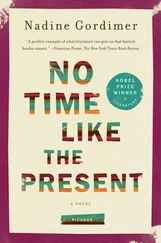The Italian Futurist painters in the early decades of our age depicted in their imagination this world, which is now ours, as a world of sleek cars whirling unhampered through streets, planes buzzing like happy bees gathering the nectar of a new age between sky-scrapers and rainbows in a radiantly clear sky. Their paintings look to us now like the work of a Grandma Moses of industrialization; yet we shared this innocent ignorance of pollution, lacked with these artists the true vision of the future, which was that we would begin to choke on our technological progress, suffocate in our cities in our own foul breath of fumes and carcinogenic vapours. We have achieved much, but we have not always stayed at the controls of purpose.
It is also intriguing to observe in ourselves how technology has intervened in the intangible, telescoping our emotions. Those antipodean states, dread and anticipation, have been out-dated. Our nineteenth-century forefathers and mothers would have to wait weeks or months for any exchange of true minds by post — the telegram was too perfunctory and public to serve for anything more intimate than news of death or wars.
In our century, the ordeal of dread is banished by instant full communication from anywhere to anywhere. And as for anticipation, that becomes instant gratification. So, not for the first or last time, the advances of technology contradict theories of human satisfaction expounded by the savants of that other kind of advance in knowledge that has dramatically distinguished our century, psychoanalysis. Apart from its purely sexual application, Freud’s deferred gratification as a refinement of emotional experience does not compare, for us, with the immediate joy of hearing a lover’s voice, or getting a friend’s reply to a letter, at once, by e-mail. Ours is the Age of Impatience that does not look forward to something: wants it now. Expects to have it, and gets it, so far as technology can provide it.
Even adventurism has been transformed by technology. The intrepid of the Euro-Russo-American world walk on the moon and dangle in space instead of ‘discovering’ jungles and rivers the indigenous inhabitants have known as home since their personal creation myths explained their presence there. The new adventurers actually experience , by weightlessness, extinction while still alive , become phantoms whose feet do not touch earth. They are the successors to the angels we, alas, no longer believe in because we have probed outer space and found no heaven.
What has been the impact on the arts, in our century of unprecedented technological development?
Perhaps only the twenty-first century will be able to assess this; we are too involved. We hear too much, we are brain-washed and conditioned by the areas of culture that have been made over by technology, or we struggle too obstinately against what surely has brought some benefits.
Technology is the means by which one of the positive consequences of the revolutions of the century — bloody or peaceful, failed or surviving — the determination to break open the elitism of the arts, has been made practical. It has brought into practice the challenge to the middle-class idea that you have to rise from the working or peasant class, somehow exceed your supposed natural disadvantages, become gentrified, to deserve and be able to enjoy the arts. This idea — of the upper classes, of course — always failed to note that the contemporary working and peasant classes had artistic values and activities of their own from which the middle-class were cut off by their self-imposed limitations in recognizing no creativity other than that of their own kind.
As for the great art of the past of what were known as indigenous (read ‘inferior’) peoples, from Mayan temples to Egyptian tombs — while that was greatly admired and even acknowledged as a useful inspiration for new forms (think of Picasso’s debt to West African sculpture), it had long been considered, even by the intellectual elite within the countries to which this great art belonged as national heritage, as something that was not within the range of aesthetic appreciation by the ordinary people, although in some instances it still served the purpose of religious worship. From the era of troupes of actors and art exhibitions travelling through the villages of Russia after the October Revolution, to this decade of the nineties when villages and even squatter camps in Africa, in India, the Middle East, have transistor radios, and television sets are run on car batteries, culture in its most easily assimilable form — entertainment sugaring information — has been democratized. There has been a redistribution of intellectual privilege through technology.
Of course there have been changes in the concept of culture; mass usage inevitably makes transformations.
Pop, reggae, rock, rap concerts gather huge crowds, all over the world, which vastly exceed any audience that Bach and Mozart have brought together. This music is the only example I can cite which justifies the current wishful fantasy of the world as the ‘global village’—through radio, cassette and disc, democratic communication of the arts succeeds in unifying peoples, at least in vociferous, sometimes ecstatic appreciation, across bitterly-contested frontiers. Those who see the forms of the music itself, the nature of popular appreciation it arouses, as a limitation within the democratization of the arts, a deprivation chosen for themselves by the masses, at least must admit that discs, and broadcasts which may be heard on the humblest of radios, can provide glorious music for people who never have had the money or opportunity to attend a live concert or opera. And by the same means a recognition and appreciation of the musical forms of the East and of Africa, from the classical ragas of Ravi Shankar to the jazz of South Africa’s kwela and mbaqanga , have spread internationally.
Yet the overwhelming cultural transformation has been brought about by television.
Television has altered human perception. It has changed the means of knowing; of receiving the world.
Of the five senses, sight now outstrips all others; watching is the most important form of comprehension. Although television speaks, it is its endless stream of images, out of which the child, the youth, even mature and old who have had considerable direct experience of life, construct reality. There used to be the concept of someone being ‘lost’ in a book, the fictional characters more live than those around the reader; this alternative construct of environment, human personality, situation, made out of the printed word, was flimsy in comparison with the visual other world renewed in palimpsest after palimpsest, day after day, night after night, for millions the last vision before sleep and the first wakened to in the morning.
The influence of this vicariously visual experience on painting begins to overtake some of the other movements which have transformed art in our century, in which John Willet has noted ‘a plea for the revival of the imagination, based on the Unconscious as revealed by psychoanalysis, together with a new emphasis on magic, accident, irrationality, symbols and dreams.’
Technological influence may exceed that of surrealism, abstraction, conceptualism. Indeed, part of television’s insidious impact is that it actually combines in popularism elements of all three: the expansion and contraction of space and the presentation of familiar objects in irrational aspects, the camera acting, for the benefit of a TV commercial, as the surreal imagination; the sensibility to abstraction stimulated by a speeded-up succession of images that blur the figurative into a swirl of light, colour, and line; the conceptual choice the images of television make in material by the medium’s necessity to present ideas in iconography. I know that every workshop of young painters in my country shows strikingly the imprinting of artists’ creativity by television’s imagery, television’s visual hierarchy of what is meaningful in our life .
Читать дальше












